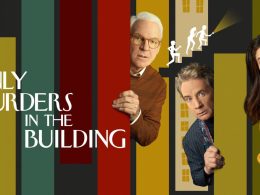Movies and TV shows have the power to transport us to different worlds, evoke emotions, and leave a lasting impact on our lives. And one of the most critical elements that contribute to these experiences is none other than music. From classical compositions to pop hits, music has always played a vital role in film and television’s evolution. In this blog post, we’ll go through the journey of music in movies and TV – from its early days to present times – exploring how it has changed over time and what we can expect for its future. So sit back, relax, and let’s take a trip down memory lane!
The early days of film and TV music
In the early days of film and TV, music was used primarily as background noise. Music was seen as a way to fill in the silence, rather than an essential part of storytelling.
Silent films relied heavily on live music performances to create mood and atmosphere for the audience. Musicians would play along with the movie, adding sound effects and musical cues when needed.
However, with the arrival of talkies in 1927, filmmakers realized that they could use music to enhance their stories even further. Composers began creating original scores specifically tailored for each movie – something which had never been done before.
In TV shows during this time period, theme songs were becoming more popular – usually simple tunes played over opening credits or at commercial breaks.
Despite being relatively primitive compared to today’s standards, these early uses of music set the stage for what was about to come next: a musical revolution in movies!
The rise of the blockbuster movie musical
In the early days of film, music was often used to set the tone or mood of a scene. However, it wasn’t until the 1930s when movie musicals became popular and showcased big song and dance numbers.
The rise of blockbuster movie musicals began in the 1960s with films like “West Side Story” and “The Sound of Music”, which both won multiple Academy Awards. These movies were huge successes at the box office and paved way for more musical adaptations such as “Grease” and “Saturday Night Fever”.
In addition to being entertaining, these movies also had chart-topping soundtracks that sold millions of copies worldwide. People couldn’t resist singing along to hits like “Summer Nights” or dancing to John Travolta’s iconic moves in “Stayin’ Alive”.
However, as time went on, audiences lost interest in traditional movie musicals. The emergence of action-packed blockbusters featuring special effects took over cinema screens.
But recently there has been a resurgence in TV shows that incorporate music into their storylines like Glee or Crazy Ex-Girlfriend.
Despite this shift towards television series rather than films, there are still successful movie musicals today such as La La Land (2016) which grossed over $440 million worldwide.
While they may not be as prevalent as they once were during their peak popularity period, blockbuster movie musicals have left an indelible mark on cinematic history through their catchy tunes and memorable performances.
The fall of the blockbuster movie musical
During the 1960s and 1970s, blockbuster musical films were all the rage. However, by the late 1980s and early 1990s, this genre began to decline in popularity.
One of the main reasons for its fall was due to changing tastes in music and film genres. Audiences began to crave more action-packed movies with special effects rather than traditional musical numbers.
Additionally, many studio executives believed that producing a successful movie musical required too much investment – both financially and creatively. As a result, fewer studios were willing to take risks on such productions.
Moreover, some critics argue that Hollywood’s reliance on adapting Broadway shows also contributed to the downfall of this genre as it limited creativity and originality in storytelling.
Despite these challenges, there have been occasional hits like “Moulin Rouge!” (2001) or “Les Misérables” (2012). However, they are far less frequent than in previous decades.
Although blockbusters may not be making waves anymore; today’s cinema is seeing a revival of smaller budgeted independent films which explore new sounds unimaginable in classic movie soundtracks while still driving stories forward through their unique blend of visuals paired with carefully curated tunes.
The resurgence of TV musicals
In recent years, there has been a significant resurgence of TV musicals. After the decline of movie musicals in the 1960s and 70s, it seemed as though audiences had lost their taste for song and dance on screen. However, with innovative shows like Glee and Crazy Ex-Girlfriend capturing viewers’ attention, the genre has made a comeback.
One reason for this resurgence is that TV allows for more experimentation than movies do. With longer running times and more episodes to fill, showrunners have the freedom to take risks with music-based storytelling. This has resulted in shows like Pose and The Get Down using music not just as a fun addition but also as an integral part of their narratives.
Furthermore, streaming services like Netflix have given rise to binge-watching culture which makes TV musicals accessible at any time. Shows like Julie and The Phantoms offer catchy tunes that are easy to sing along with while being entertaining enough to keep viewers engaged throughout multiple episodes.
The resurgence of TV musicals signals a shift towards more diverse forms of storytelling on television. As long as creators continue pushing boundaries within this genre, we can expect even greater innovation in the future.
What the future holds for music in film and TV
As technology advances and the entertainment industry evolves, it’s clear that the role of music in film and TV will continue to shift. With new platforms like streaming services and social media allowing for more diverse content creation, we can expect to see a wider range of musical genres represented on screen.
Additionally, as audiences become more savvy about the importance of sound design in their viewing experiences, we can expect to see even greater innovation and creativity when it comes to integrating music into visual storytelling.
One thing is certain: despite its ups and downs over the years, music has always played a crucial role in bringing films and TV shows to life. And as long as there are stories to be told and emotions to be conveyed on screen, there will always be a place for talented composers, songwriters, performers, and music supervisors in this ever-evolving industry.










